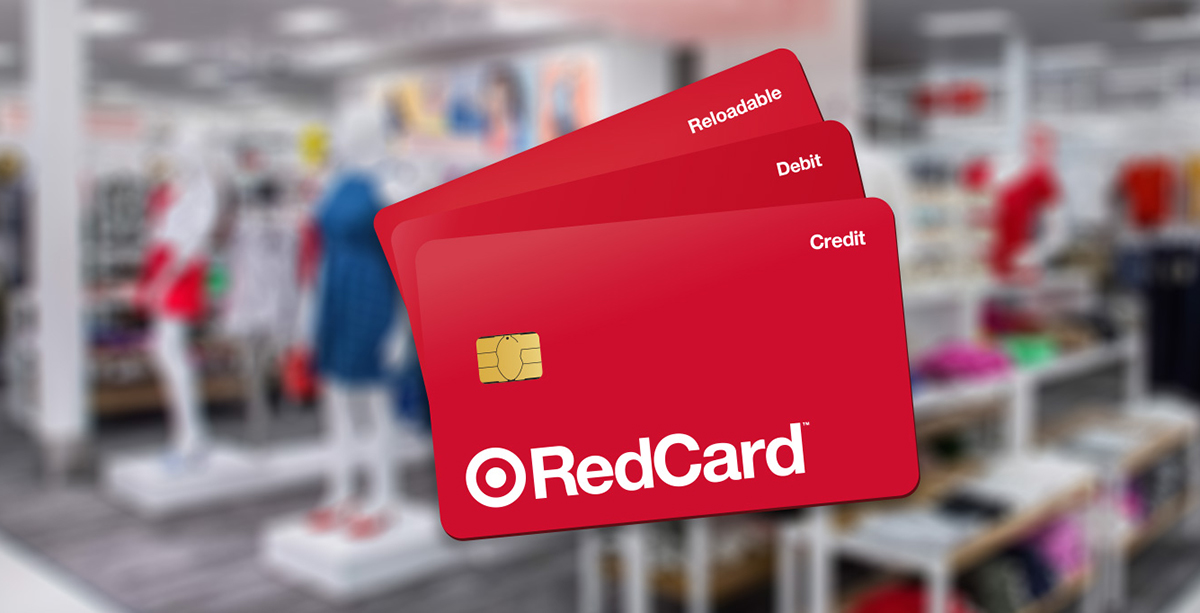

Finance
How To Buy Cryptocurrency In New York
Published: October 5, 2023
Learn how to buy cryptocurrency in New York and stay informed about the finance industry. Discover the latest trends and investment opportunities in the world of digital currencies.
(Many of the links in this article redirect to a specific reviewed product. Your purchase of these products through affiliate links helps to generate commission for LiveWell, at no extra cost. Learn more)
Table of Contents
- Introduction
- Legal and Regulatory Landscape in New York
- Choosing a Cryptocurrency Exchange
- Creating an Account on a Cryptocurrency Exchange
- Verifying Your Identity
- Linking a Bank Account or Credit Card
- Funding Your Account
- Selecting a Cryptocurrency to Purchase
- Placing an Order
- Cryptocurrency Storage and Security Measures
- Tax Considerations for Cryptocurrency Trading in New York
- Conclusion
Introduction
Welcome to the world of cryptocurrency! Whether you’re a beginner looking to dip your toes into the exciting world of digital assets or a seasoned investor seeking to expand your portfolio, learning how to buy cryptocurrency in New York is an essential step in your journey. Cryptocurrencies, such as Bitcoin and Ethereum, have gained immense popularity and have the potential to revolutionize the financial industry.
However, buying cryptocurrency in New York comes with its own set of challenges due to the unique legal and regulatory landscape in the state. New York has implemented strict regulations to ensure consumer protection and combat money laundering and fraud. It’s important to navigate these regulations and choose a trusted and reliable cryptocurrency exchange to buy and trade digital assets.
In this guide, we will walk you through the process of buying cryptocurrency in New York, from choosing a cryptocurrency exchange to funding your account and placing an order. Additionally, we will discuss the importance of cryptocurrency storage and security measures, as well as the tax considerations that come with cryptocurrency trading in New York.
So, whether you’re looking to invest in Bitcoin, Ethereum, or any other digital asset, let’s dive in and explore how to buy cryptocurrency in New York!
Legal and Regulatory Landscape in New York
When it comes to buying and trading cryptocurrency in New York, it’s crucial to understand the legal and regulatory landscape governing this emerging industry. The state of New York is known for its stringent regulations designed to protect consumers and prevent illicit activities.
One of the key regulations implemented in New York is the BitLicense. Introduced by the New York State Department of Financial Services (NYDFS) in 2015, the BitLicense is a comprehensive set of rules and guidelines for virtual currency businesses operating in the state. It establishes a framework for cryptocurrency exchanges to operate lawfully in New York while ensuring the safety of customers’ funds.
Under the BitLicense, cryptocurrency exchanges must comply with various requirements, including submitting detailed operating plans, maintaining robust cybersecurity measures, conducting background checks on key personnel, and implementing anti-money laundering (AML) and know-your-customer (KYC) procedures. These stringent regulations aim to prevent fraud, money laundering, and illicit activities within the cryptocurrency industry.
In addition to the BitLicense, New York has also established the Virtual Currency Business Activity (VCBA) framework. This framework requires virtual currency businesses to obtain a license or be granted a charter to operate legally in the state.
It’s important to note that not all cryptocurrency exchanges have obtained the necessary licenses or charters to operate in New York. Therefore, when choosing a cryptocurrency exchange, it’s crucial to ensure that it is compliant with New York’s legal and regulatory requirements.
By adhering to these regulations, cryptocurrency exchanges provide users with a higher level of security and protection. As a consumer, it’s important to prioritize using licensed exchanges that comply with the necessary regulations to safeguard your funds and personal information.
Now that we have a better understanding of the legal and regulatory landscape in New York, the next step is to choose a reputable cryptocurrency exchange that meets these requirements. Let’s explore the process of selecting the right exchange in the next section.
Choosing a Cryptocurrency Exchange
Choosing the right cryptocurrency exchange is a crucial step in the process of buying cryptocurrency in New York. With numerous exchanges available, each offering different features and services, it’s essential to consider several factors before making your decision.
Firstly, security should be your top priority. Look for an exchange with a strong track record of security measures, such as two-factor authentication (2FA), cold storage of funds, and encrypted communication. Additionally, check if the exchange has a history of being hacked or if they have experienced any security breaches in the past.
Secondly, consider the reputation and trustworthiness of the exchange. Research online reviews, user experiences, and industry publications to gain insights into the exchange’s reliability and customer satisfaction. Look for exchanges that have been operating for a significant period and have established themselves as reputable players in the market.
Next, assess the range of cryptocurrencies offered by the exchange. Ensure that the exchange supports the specific cryptocurrencies you’re interested in purchasing. Popular exchanges typically offer a wide selection of digital assets, including Bitcoin, Ethereum, Litecoin, and others.
Fees are another important consideration. Exchanges charge fees for various transactions, such as depositing funds, buying or selling cryptocurrencies, and withdrawing funds. Compare the fee structures of different exchanges to find one that aligns with your budget and trading preferences. Keep in mind that lower fees may sometimes come at the expense of lower liquidity or customer support.
User experience and interface should also be taken into account. A user-friendly and intuitive platform can make the buying process more convenient and enjoyable. Look for exchanges that offer a smooth and seamless trading experience with clear navigation and easily accessible support options.
Finally, consider the exchange’s compliance with New York regulations, such as the possession of a BitLicense or VCBA charter. Operating with a licensed and regulated exchange ensures that you’re dealing with a legitimate and trustworthy service provider.
Taking all these factors into consideration, you can make an informed decision when choosing a cryptocurrency exchange in New York. In the next section, we will guide you through the process of creating an account on a cryptocurrency exchange.
Creating an Account on a Cryptocurrency Exchange
Once you have selected a reputable cryptocurrency exchange that meets your requirements, the next step is to create an account. The account creation process generally involves providing personal information, verifying your identity, and agreeing to the exchange’s terms and conditions.
Here’s a step-by-step guide on how to create an account on a cryptocurrency exchange:
- Visit the exchange’s website and locate the “Sign Up” or “Create Account” button. Click on it to begin the registration process.
- Enter your email address and choose a strong, unique password. Make sure to use a combination of letters, numbers, and symbols for enhanced security.
- Read and accept the exchange’s terms and conditions, privacy policy, and any other applicable agreements.
- Some exchanges may require you to verify your email address by clicking on a confirmation link sent to your inbox. Follow the instructions provided to complete the verification process.
- Next, you may be asked to provide additional personal information, such as your full name, date of birth, and address. This information is required to comply with KYC and AML regulations.
- After providing your personal information, you may need to undergo an identity verification process. This typically involves uploading a scanned copy of a government-issued identification document, such as a passport or driver’s license.
- Once your identity verification is complete, your account will be activated, and you can start using the exchange’s services.
It’s important to note that different exchanges may have variations in their account creation process. Some exchanges may require additional documents or information depending on their regulatory requirements or the level of account verification you choose.
Throughout the account creation process, ensure that you are using a secure and private internet connection. Avoid using public Wi-Fi networks or shared computers to protect your personal information.
Creating an account on a cryptocurrency exchange is the first step towards buying and trading digital assets. In the next section, we will discuss the process of verifying your identity to ensure compliance with New York regulations.
Verifying Your Identity
Verifying your identity is an essential step when buying cryptocurrency in New York. Cryptocurrency exchanges are required to comply with KYC (Know Your Customer) and AML (Anti-Money Laundering) regulations, which aim to prevent fraud, money laundering, and other illicit activities.
The identity verification process may vary slightly between exchanges, but it generally involves the following steps:
- Providing Personal Information: During the account creation process, you may be asked to provide personal details such as your full name, date of birth, and address. Ensure that you enter the information accurately and truthfully.
- Submitting Identification Documents: To verify your identity, you will be required to submit scanned copies or clear photos of a government-issued identification document. This can include a passport, driver’s license, or national ID card. Make sure the documents are valid and not expired.
- Selfie Verification: Some exchanges may require you to take a selfie while holding your identification document. This step is taken to ensure that the person creating the account is the same as the one represented in the identification document. Follow the instructions provided to complete this step.
It’s important to note that the information and documents you provide during the verification process are kept confidential and are only used for compliance purposes. Reputable exchanges have robust security measures in place to protect your personal data.
The verification process may take some time to complete. Be patient and follow any additional instructions or requests from the exchange. Once your identity has been successfully verified, you will be able to access the full range of services offered by the exchange.
Verifying your identity is a crucial step in ensuring the security and integrity of the cryptocurrency ecosystem. By complying with KYC and AML regulations, exchanges are able to create a safer and more transparent environment for users to engage in cryptocurrency transactions.
Now that you have successfully verified your identity, the next step is to link your bank account or credit card to your cryptocurrency exchange account. We will discuss this process in the next section.
Linking a Bank Account or Credit Card
Linking a bank account or credit card to your cryptocurrency exchange account is an essential step in order to fund your account and make purchases or trades. The process of linking your financial accounts can vary slightly depending on the exchange you are using, but the following steps are generally involved:
- Accessing Payment Settings: Log in to your cryptocurrency exchange account and navigate to the payment or account settings section. Look for options related to linking or adding a bank account or credit card.
- Selecting the Type of Account: Choose whether you want to link a bank account or a credit card. Consider the advantages and limitations of each option. Linking a bank account may provide lower fees and higher transaction limits, while linking a credit card can offer convenience and faster transactions.
- Providing Account Details: Enter the required information for your bank account or credit card. This may include your account number, account holder’s name, bank name, credit card number, expiration date, and CVV code. Make sure to double-check the accuracy of the information before proceeding.
- Verifying Accounts: To ensure the security of your financial information, the exchange may require you to verify the linked bank account or credit card. This can be done in various ways, such as providing screenshots of your account statement or completing a small test transaction that will be refunded to you.
- Confirmation and Approval: After providing the necessary information and completing any required verification steps, your bank account or credit card will be linked to your cryptocurrency exchange account. You will typically receive a confirmation or approval notification.
It’s important to note that different cryptocurrency exchanges may have different requirements and options for linking bank accounts or credit cards. Some exchanges may have specific partnerships with certain banks or payment processors, so make sure that your bank or credit card is compatible with the exchange you are using.
Linking your bank account or credit card to your cryptocurrency exchange account allows you to easily deposit funds, make purchases, and withdraw funds when needed. However, it’s crucial to ensure that you are using a secure and trusted exchange to protect your financial information.
Now that you have successfully linked your bank account or credit card, you are ready to fund your cryptocurrency exchange account. In the next section, we will discuss the process of funding your account and selecting the cryptocurrency you want to purchase.
Funding Your Account
Once you have linked your bank account or credit card to your cryptocurrency exchange account, the next step is to fund your account. Funding your account allows you to have the necessary funds to make purchases and trades within the exchange.
The process of funding your account can vary depending on the cryptocurrency exchange you are using and the payment methods available. Here are some general steps to follow when funding your account:
- Access Account Funding: Log in to your cryptocurrency exchange account and navigate to the funding or account balance section. Look for options related to depositing or funding your account.
- Select Deposit Method: Choose the preferred payment method for depositing funds into your account. This can include options such as bank transfer, credit/debit card, or other payment providers supported by the exchange.
- Enter Deposit Amount: Specify the amount of money you want to deposit. Ensure that you have sufficient funds in your linked bank account or available credit on your credit card.
- Complete the Transaction: Follow the instructions provided by the exchange to complete the transaction. This may involve providing additional verification or authentication for security purposes.
- Confirmation and Processing Time: Once you have completed the deposit, you will typically receive a confirmation of the transaction. The processing time for the deposit can vary depending on the payment method used and the exchange’s policies.
It’s important to keep in mind that some exchanges may have minimum deposit requirements or may charge fees for deposits. Make sure to review the exchange’s fee structure and policies beforehand to avoid any surprises.
After successfully funding your account, the deposited funds will be available for you to use within the exchange. You can then proceed to select the cryptocurrency you want to purchase.
In the next section, we will explore the process of selecting a cryptocurrency to purchase and placing an order on a cryptocurrency exchange.
Selecting a Cryptocurrency to Purchase
Now that you have funded your cryptocurrency exchange account, it’s time to select the specific digital asset you want to purchase. The cryptocurrency market offers a wide range of options, each with its own unique characteristics and potential for growth.
Consider the following factors when selecting a cryptocurrency to purchase:
- Research and Education: Take the time to research and educate yourself about different cryptocurrencies. Understand their underlying technology, use case, market trends, and potential risks. This will help you make informed decisions and choose a cryptocurrency that aligns with your investment goals.
- Market Performance: Analyze the historical performance and current market trends of different cryptocurrencies. Look at factors such as price volatility, trading volume, and market capitalization. Consider the potential for growth and any recent news or developments that may impact the price and adoption of the cryptocurrency.
- Diversification: Consider diversifying your portfolio by selecting multiple cryptocurrencies. This can help spread the risk and potentially increase your chances of capturing gains in different market conditions. Choose cryptocurrencies that offer different value propositions and have low correlation with each other.
- Utility and Adoption: Evaluate the utility and adoption of the chosen cryptocurrency. Look for projects that have real-world use cases, partnerships with established companies, and a growing community of users and developers. This indicates the potential for long-term viability and growth.
- Risk Tolerance: Assess your risk tolerance level and investment goals. Cryptocurrency investments can be highly volatile and speculative, so it’s important to consider your financial situation and willingness to withstand market fluctuations.
Each individual’s investment strategy will vary based on their risk appetite and long-term goals. It’s essential to conduct thorough research and seek advice from financial professionals if needed before making any investment decisions.
Once you have selected the cryptocurrency you want to purchase, you can proceed to place an order on the cryptocurrency exchange. In the next section, we will guide you through the process of placing an order.
Placing an Order
After selecting the cryptocurrency you want to purchase, the next step is to place an order on the cryptocurrency exchange. Placing an order involves specifying the amount of cryptocurrency you want to buy and at what price.
Here’s a step-by-step guide on how to place an order on a cryptocurrency exchange:
- Access the Trading Platform: Log in to your cryptocurrency exchange account and navigate to the trading platform or order placement section. This is where you will be able to execute your buy order.
- Select the Cryptocurrency Pair: Choose the cryptocurrency pair you want to trade. For example, if you want to buy Bitcoin using US dollars, you would select the BTC/USD pair.
- Choose Buy Order: On the trading platform, select the option to place a buy order. Some exchanges may display this as “Buy” or “Market Buy”.
- Specify the Order Details: Enter the amount of cryptocurrency you want to purchase. You can either specify the exact quantity of the cryptocurrency or specify the amount in your local currency that you want to spend. Some exchanges also provide options for different order types, such as market orders or limit orders.
- Review and Confirm: Double-check the details of your order, including the quantity and price. Take note of any trading fees or commissions that will be applied to your order. Once you are confident with the order details, confirm the order.
- Execution of the Order: Your buy order will be submitted to the exchange’s order book, and it will be executed based on the current market conditions. If it’s a market order, it will be executed at the best available price. If it’s a limit order, it will be executed only when the price reaches your specified limit.
- Confirmation and Order Status: After your order is executed, you will receive a confirmation on the exchange’s platform. You can also view the status of your order, including the filled quantity and the remaining balance, in your account’s order history.
It’s important to note that the speed of order execution and the availability of cryptocurrency liquidity can vary depending on market conditions and the exchange you are using. It’s always recommended to review the order details carefully before placing the order and monitor the execution to ensure it is completed as intended.
Congratulations! You have successfully placed an order to buy cryptocurrency on a cryptocurrency exchange. Once the order is executed, the cryptocurrency will be added to your account’s balance. Now, it’s essential to understand how to store and secure your digital assets. The next section will discuss cryptocurrency storage and security measures.
Cryptocurrency Storage and Security Measures
Ensuring the security of your cryptocurrency holdings is of utmost importance. Cryptocurrencies are digital assets that require proper storage and security measures to protect them from theft, hacking, or loss. Here are some key considerations for storing your cryptocurrencies securely:
- Hardware Wallets: Consider using a hardware wallet, which is a physical device that securely stores your private keys offline. These wallets are not connected to the internet, making them highly resistant to hacking attempts. Examples of popular hardware wallets include Ledger and Trezor.
- Software Wallets: Software wallets are applications that you can install on your computer or mobile device to store your cryptocurrencies. Ensure that you choose reputable and secure wallet options from trusted providers.
- Two-Factor Authentication (2FA): Enable 2FA on all of your cryptocurrency exchange and wallet accounts. 2FA provides an additional layer of security by requiring a second form of verification, such as a unique code generated on your smartphone, in addition to your username and password.
- Backup Your Wallet: Make regular backups of your wallet software or hardware wallet. Store these backups in multiple secure locations, such as encrypted external hard drives or in highly secure cloud storage.
- Use Strong Passwords and Encryption: Use long, complex passwords for your cryptocurrency accounts and wallets. Consider using a password manager to securely store and generate unique passwords. Encrypt your computer’s hard drive or mobile device storage to add an extra layer of protection.
- Stay Updated: Keep your software wallets, hardware wallets, and operating systems up to date with the latest security patches and updates. Regularly check for and install any available updates to mitigate potential vulnerabilities.
- Beware of Phishing Attempts: Be cautious of phishing attempts, where malicious actors try to trick you into revealing your private keys or login credentials through fake websites or emails. Always double-check the URLs of websites and ensure you are using official sources and verified platforms.
- Consider Cold Storage: Cold storage involves keeping your private keys completely offline, such as on a paper wallet or offline computer. This method can offer an extra layer of security by minimizing exposure to online threats.
Remember, the responsibility for the security of your cryptocurrencies lies with you. Implementing robust security measures from the start and staying vigilant can significantly reduce the risk of theft or unauthorized access to your digital assets.
In the next section, we will discuss the tax considerations for cryptocurrency trading in New York.
Tax Considerations for Cryptocurrency Trading in New York
When engaging in cryptocurrency trading in New York, it’s important to be aware of the tax implications associated with buying, selling, and trading digital assets. The Internal Revenue Service (IRS) treats cryptocurrency as property for tax purposes, which means that it is subject to taxation similar to other forms of investments.
Here are some key tax considerations to keep in mind:
- Capital Gains Tax: Profits from the sale or exchange of cryptocurrencies are generally subject to capital gains tax. This tax is calculated based on the difference between the purchase price and the selling price of the cryptocurrency. Short-term capital gains tax rates may apply if the cryptocurrencies were held for a year or less, while long-term capital gains tax rates may apply for holdings longer than a year.
- FIFO Method: The IRS generally requires the First-in, First-out (FIFO) method for determining the cost basis and holding period of your cryptocurrencies. This means that when selling or trading cryptocurrencies, the ones you acquired first are considered to be sold first.
- Reporting Income: Any income received in the form of cryptocurrency, such as mining rewards or payments for goods and services, is considered taxable income and must be reported on your tax return. It is important to maintain accurate records of these transactions.
- Form 1099-K and Form 1099-B: Some cryptocurrency exchanges may issue Form 1099-K or Form 1099-B to report your cryptocurrency transactions. However, it is your responsibility to accurately report all cryptocurrency-related income and transactions, even if you do not receive these forms.
- New York State Tax: In addition to federal taxes, cryptocurrency traders in New York may also be subject to state taxes. New York State imposes capital gains tax on cryptocurrency transactions, and the tax rate is determined by your overall income and filing status.
- Consult a Tax Professional: Cryptocurrency taxation can be complex, and the rules and regulations may vary depending on your individual circumstances. It is advisable to consult a qualified tax professional who is knowledgeable about cryptocurrency taxation to ensure that you comply with all applicable tax laws and regulations.
Remember to keep detailed records of your cryptocurrency transactions, including purchase dates, purchase prices, sale dates, and sale prices. These records will be crucial for accurately calculating your tax liabilities and reporting them to the IRS and the New York State Department of Taxation and Finance.
It’s important to stay informed about the evolving tax regulations surrounding cryptocurrencies as they may change over time. Regularly review the guidance provided by tax authorities and consult with a tax professional to ensure you are meeting your tax obligations effectively.
Now that you are aware of the tax considerations, let’s conclude our guide on how to buy cryptocurrency in New York.
Conclusion
Congratulations! You have reached the end of our comprehensive guide on how to buy cryptocurrency in New York. We have covered various important aspects of the process to help you navigate the legal, regulatory, and practical considerations involved in purchasing digital assets within the state.
Remember, New York has specific regulations in place, such as the BitLicense, to ensure consumer protection and combat fraudulent activities. It is crucial to choose a reputable cryptocurrency exchange that complies with these regulations and prioritizes security.
We discussed the steps to create an account, verify your identity, link a bank account or credit card, fund your account, and place an order on a cryptocurrency exchange. It’s important to conduct thorough research before selecting a specific cryptocurrency to purchase, considering factors such as market performance, utility, and adoption.
Additionally, we highlighted the importance of secure cryptocurrency storage and the implementation of strict security measures to protect your digital assets from theft or hacking. We also emphasized the need to be aware of the tax implications associated with cryptocurrency trading in New York and the importance of accurately reporting your transactions.
As with any investment, it’s essential to exercise caution, conduct thorough research, and consult with financial professionals if needed. Stay informed about the latest developments in the cryptocurrency industry and continuously educate yourself to make informed decisions.
Now that you have gained a solid understanding of how to buy cryptocurrency in New York, it’s time to embark on your cryptocurrency journey. Stay curious, stay informed, and enjoy exploring the exciting world of digital assets!














